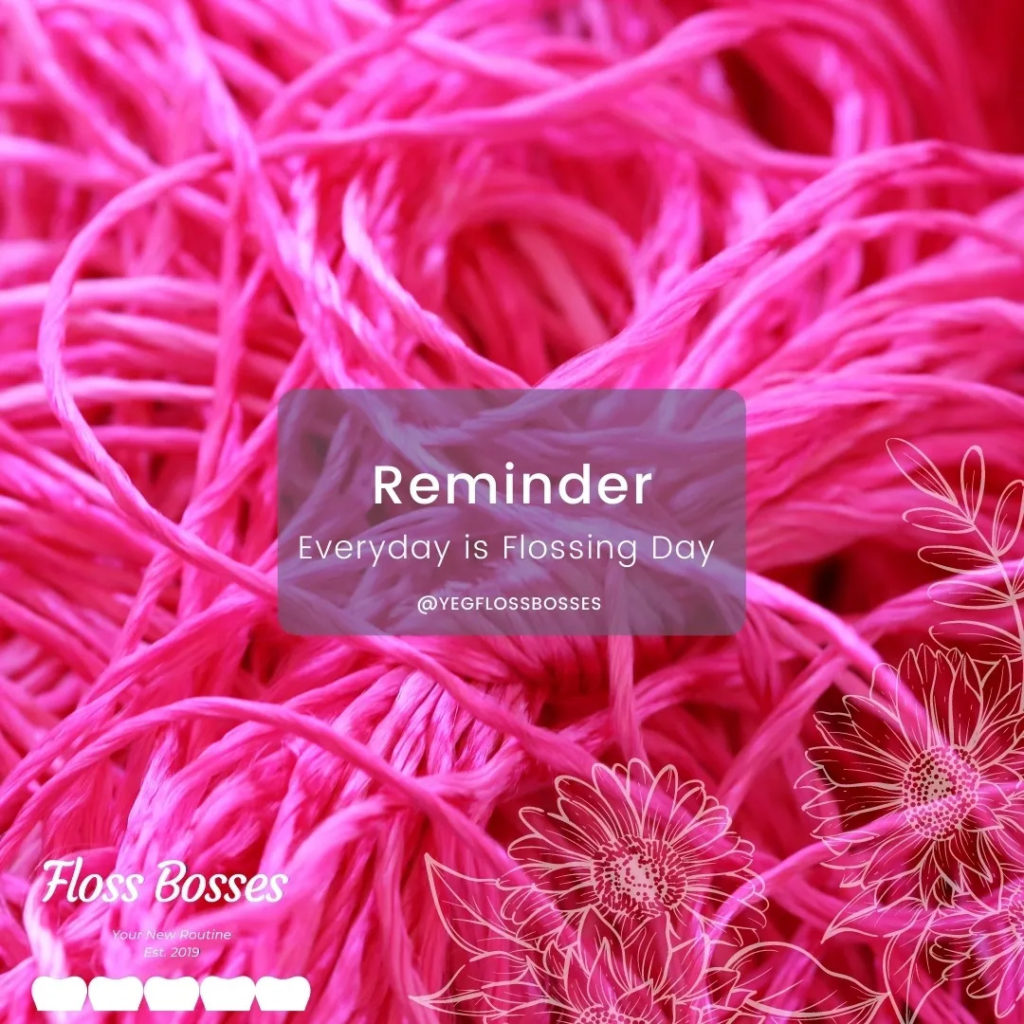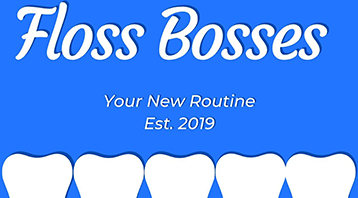Floss or not to floss is the hardest and most existential question out there. Just kidding hehehe.
Let’s talk about floss baby, let’s talk about what it can be, let’s talk about all the things that it can kill… lets talk about flossssss (insert Salt-N-Pepa music).
Let’s start with basics of biofilm, tooth decay and gum disease.
What are we exactly removing by brushing and flossing?
Brushing and flossing removes biofilm off the surface of the teeth that accumulates after eating, drinking and with normal cell turn over. Studies show that biofilm also accumulates even if we don’t ingest anything. That’s probably because of the accumulation of dead cells from typical and normal cell turnover in the mouth (This is for all of you that wonder why I still have a job even when you brush and floss properly & well).
Biofilm is also called plaque. This film is a complex matrix of microbes, their byproducts (poop) and acid. There are billions of different kinds of microbes in a spec of biofilm. Biofilm is so complex that is the toughest substance to ever get rid of. It leads to gum inflammation and disease, and formation of calculus aka tartar.
Why do we need to brush and floss this biofilm off? Because it is like a sponge. It absorbs more acid and more bacteria leading to gum disease, tooth decay and already mentioned calculus / tartar formation.
If not removed regularly, within 24-48 hours, biofilm matures and can cause inflammation of the gums. After 72 hours, with the help of minerals in saliva and food, biofilm starts to harden. That’s when you need to come and see one of your Floss Bosses for teeth cleaning to help you with your oral care.
What removes this biofilm?
Simple action of the tongue, cheek and lip muscles is the primary cleaning tool of our mouth. Next time you eat, observe what you do while & after you consume your food.
A lot of us also brush our teeth. Tooth brushing removes about 50% of the plaque. Thank you Egyptians, Babylonians and Chinese for inventing a toothbrush.
If brushing removes 50% of the biofilm, what happens to the rest? It lingers, and it festers, causing breakdown of the soft tissue around the tooth, gum disease (jawbone decay), and tooth decay.
FLOSSING
There are number of significant surfaces that are not accessible by the toothbrush. These are the areas that are more prone to bacterial inflammation. They are safe, moist and with less or complete lack of oxygen. These spots attract the bad guys (gum disease bacteria hate oxygen).
When did we start using floss? Once upon a time, circa 1815, a New Orleans dentist began advising his patients to use a thin silk thread to clean between their teeth.
Flossing targets the hidden areas around the tooth minimizing risk of gum disease, tooth decay, sensitivity and bad breath. With this comes the systemic reward. Flossing minimizes the microbial burden on your overall health. You won’t drop dead from these bacteria but they do slowly poison your body. There are numerous links between gum disease, heart disease, lung disease, cancers, Alzheimers etc
Teeth are not just for chewing. They are for talking, smiling, socializing and being able to enjoy all the foods, drinks and whatever else life has to offer.
How to floss
You’ll need about a foot of floss.
- Wrap the floss around your MIDDLE FINGERs. Use your index finer and thumb to pinch an inch. That’s the inch you will use in between the teeth.
- The floss has to hug the tooth in a C shape way, so it can actually go beyond the gum line, deep into the pocket.
- The floss doesn’t just go in between the teeth but against each surface of the tooth.
- It is important to start on one end of lower or upper jaw and continue in a regular fashion as to not miss any areas.
- Also, make sure you go up and down at least 4x before moving on to another surface. Therefore, in between 2 teeth, you have to go up and down 8x, 4x per surface.
6.Leave your floss everywhere around the house so you won’t forget to floss.
Check out my video on the flossing demo.
For all you non-flossers. There is good news. At Floss Bosses, we have an interdental toothbrush called Curaprox. It is the ultimate boss if you don’t like flossing. It removes biofilm and prevents / treats inflammation. With a special probe, we measure your interdental space and fit you with your own Curaprox Brush. Check it out below.
Follow us on IG @yegflossbosses for more tips.

